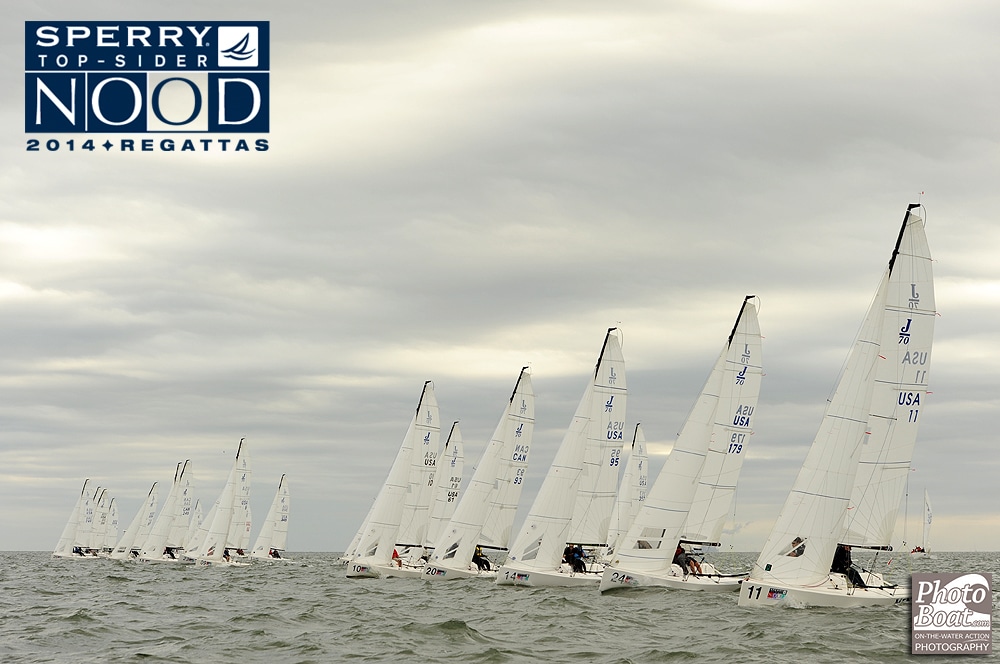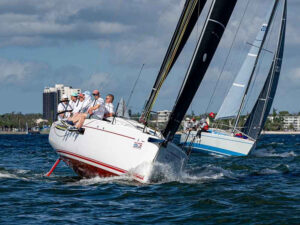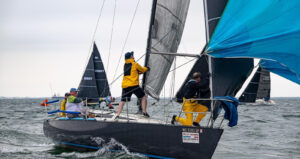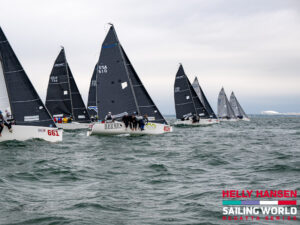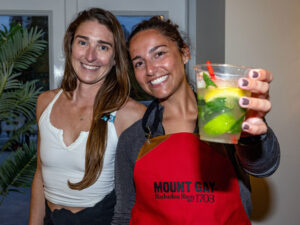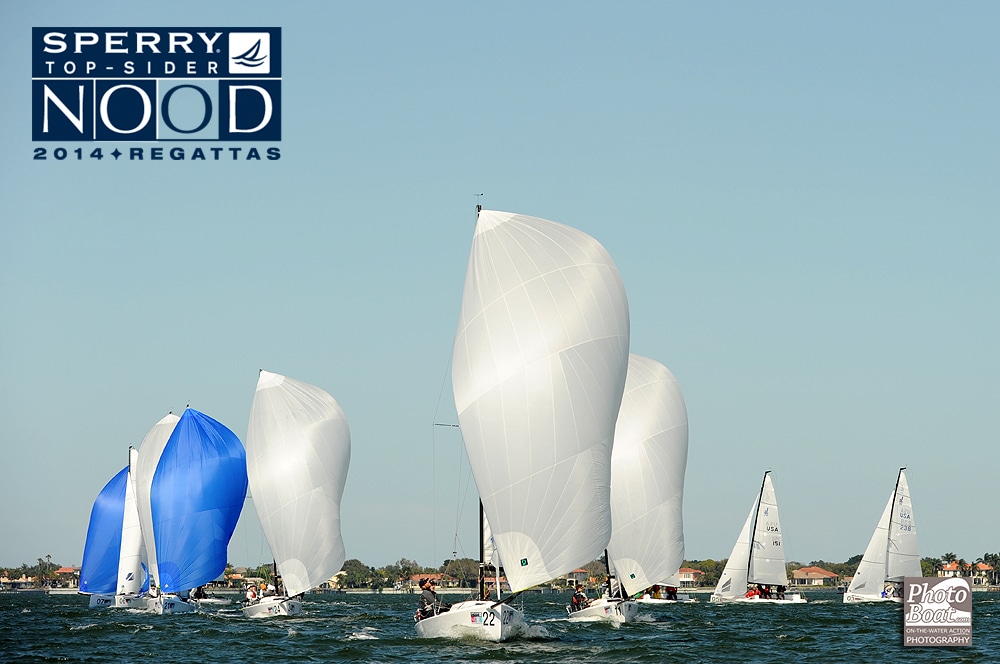
As we waited for breeze that never filled in on the third day at the 2014 Sperry Top-Sider St. Petersburg NOOD, I took the opportunity to consider what made our weekend so successful on board the J/70 Catapult. Skipper Joel Ronning, Bill Hardesty, Willem van Waay, and I sailed a consistent, smart regatta that led to a win for the weekend. With Hardesty’s help, I came up with five keys to success in the 28-boat fleet in yesterday’s puffy 10-15 knot conditions.
Keep it boring: Communicate your plan clearly and early. From picking which side of the course you want in the pre-start, to deciding on a gate, to knowing whether to launch the spinnaker at the windward mark or offset, make it clear so there are no surprises. As Hardesty says, “Keep it boring.”
Options off the line: After the start, we always had the ability to either hold our lane and continue on starboard, or tack if we wanted to, rather than having others dictate the first portion of the beat. We never tried to win an end of the starting line but instead found clean lanes toward the end that was favored. With our options open, we could head toward the favored side and start to leg out with speed–watch the video from our second race for more:
Choosing modes downwind: With puffy, shifty conditions on the second day, we alternated between planing and displacement mode. In the puffs, we’d be hiking with the jib out. In the lulls, we’d move forward and to leeward, and furl the jib up. Whenever conditions were on the edge, we discussed what the best mode would be and then committed to that.
Communicate the big picture: Hardesty asked van Waay and I to give big-picture input to him and Ronning whenever we could—things like: “Three minutes to the next wind line.” In addition to our calls on puffs, chop, and boatspeed, these big-picture items ensure that everyone’s on the same page, and that you won’t tack short of the next pressure line.
“I’d rather work on boatspeed than takedowns.”
Boatspeed first: This tip is so crucial that it bears repeating. As Hardesty said the day before the regatta, “I’d rather work on boatspeed than takedowns. If you’re ahead of everyone, the takedown will just happen.” We made sure our settings were just right before the race and then used our speed to get away from the pack and sail our own race. While Ronning, Hardesty, and van Waay were dialed in with the crew mechanics, I was learning on the fly for my first J/70 regatta. Pulling away from the fleet gave us that extra wiggle room to ensure that no major errors were made around the marks.
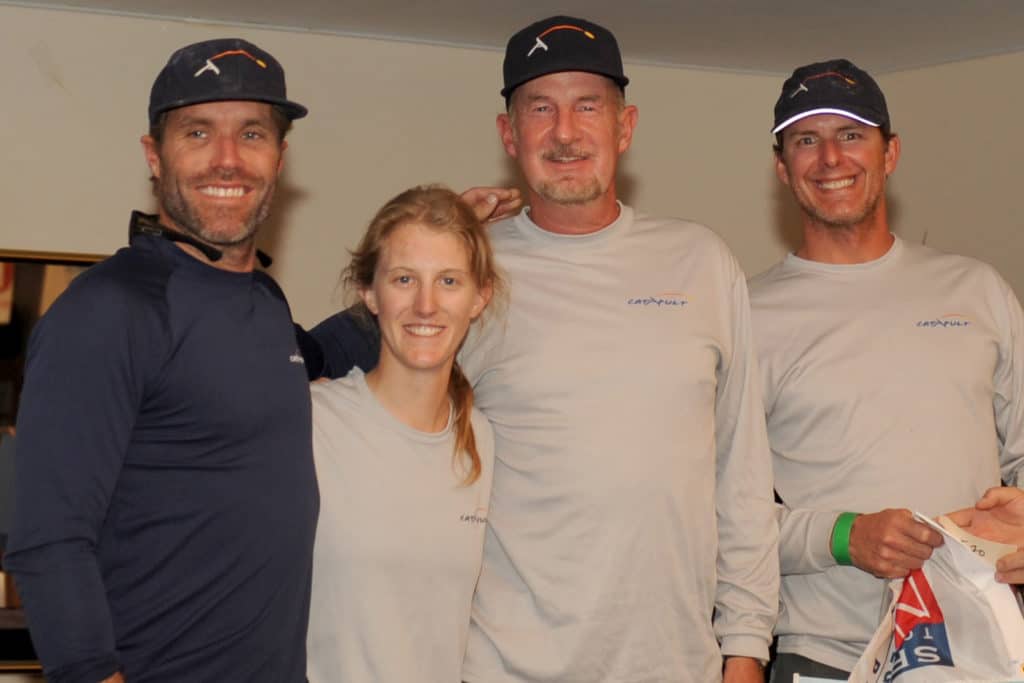
Catapult at the St. Pete NOOD
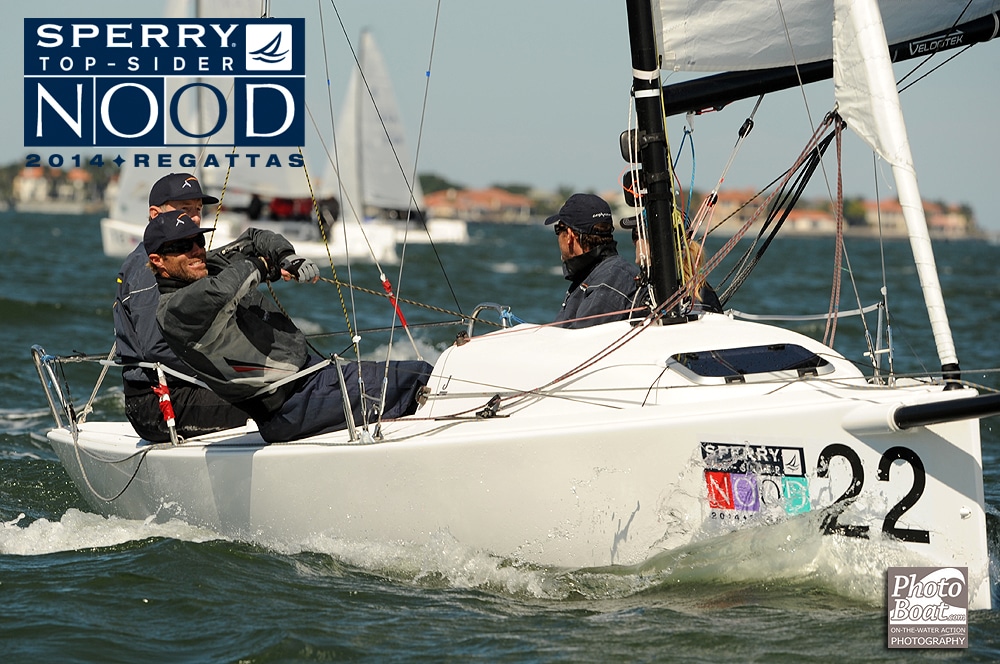
J/70 Catapult at the Sperry Top-Sider St. Petersburg NOOD
